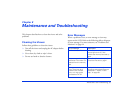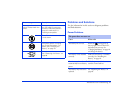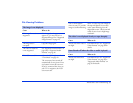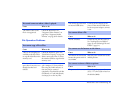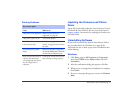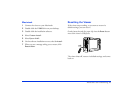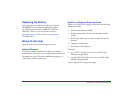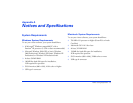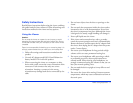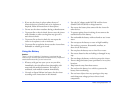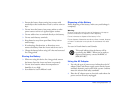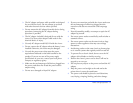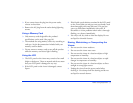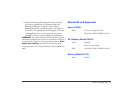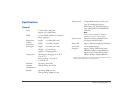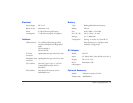
Notices and Specifications 71
Safety Instructions
Read all these instructions before using the viewer, and keep
this guide handy for later reference. Follow all warnings and
instructions marked on the viewer and any options.
Using the Viewer
Caution:
Do not drop the viewer or expose it to any impact, to avoid
damaging the internal hard disk and losing stored files. Do not
format the hard disk from your computer, or the viewer will be
unusable.
Epson is not responsible for backing up or recovering data. It is
strongly recommended that you make your own backup files.
❍
Follow all warnings and instructions marked on this
product.
❍ Use only AC adapter model A351H and lithium-ion
battery model D111A with this product.
❍ When connecting the viewer to a computer or other
device with a cable, ensure the correct orientation of the
connectors. Each connector has only one correct
orientation. Inserting a connector in the wrong
orientation may damage both devices connected by the
cable.
❍ Do not insert objects into the slots or openings on the
viewer.
❍ Do not touch the components inside the viewer unless
instructed to do so in the documentation. Never force
the viewer’s components into place. Although the viewer
is designed to be sturdy, rough handling can damage it.
❍ Never spill liquid onto the viewer.
❍ If the viewer emits unusual noises, odors, or smoke,
cancel the current operation and turn it off immediately.
Remove the battery and disconnect the AC adapter from
the viewer, then unplug the AC adapter from the power
outlet. Contact Epson.
❍ Do not use your headphones for long periods at high
volume as this can cause permanent hearing loss.
❍ Do not use your headphones while operating a vehicle
or performing an activity that requires attention to
external sound. When wearing your headphones, we
strongly recommend setting the volume so that you can
hear your normal speaking voice.
❍ Do not stand the device upright as it may fall over and
be damaged.
❍ Do not use the viewer after moving it between extreme
temperatures, which may cause condensation to form on
electronic parts.



